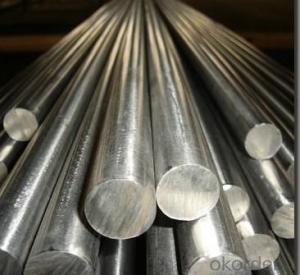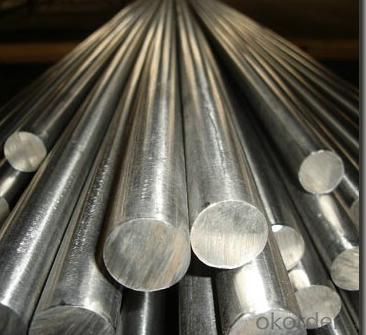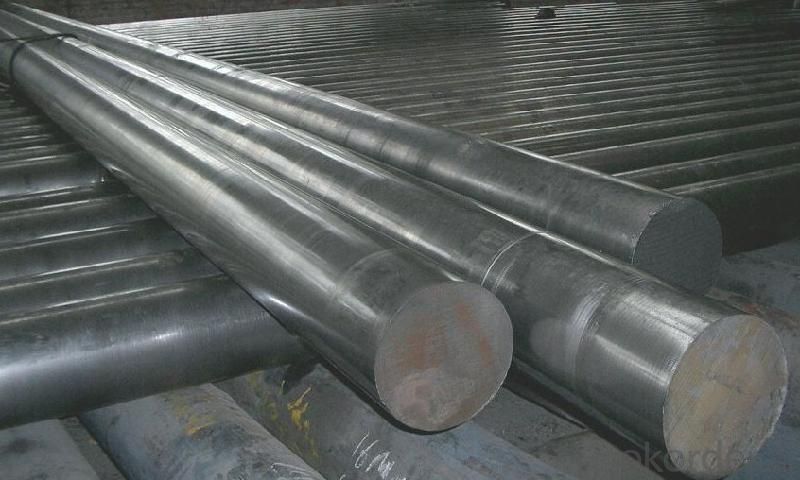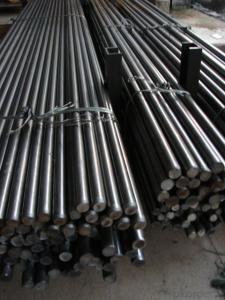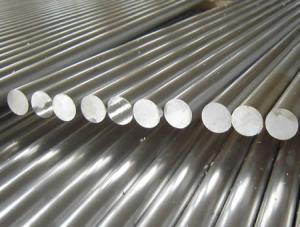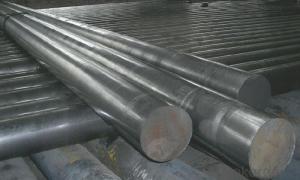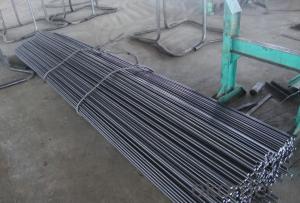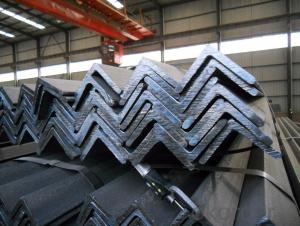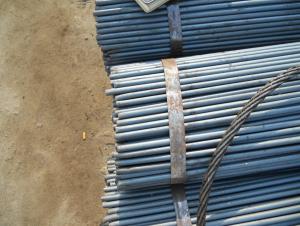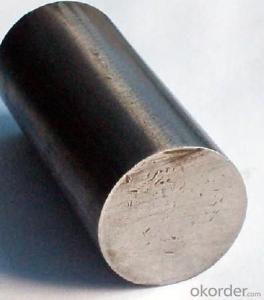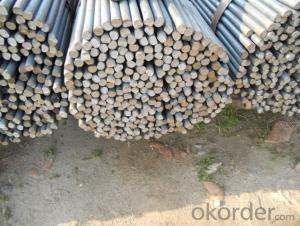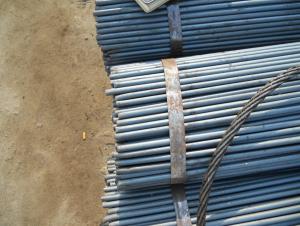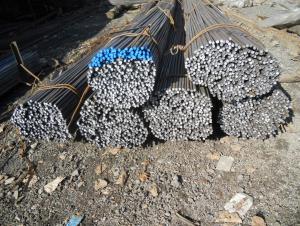Cold Drawn Steel Round Bar with High Quality-75mm-100mm
- Loading Port:
- China Main Port
- Payment Terms:
- TT or LC
- Min Order Qty:
- 100 m.t
- Supply Capability:
- 10000 m.t/month
OKorder Service Pledge
OKorder Financial Service
You Might Also Like
Cold Drawn Steel Round Bar with High Quality-75mm-100mm
Specifications:
1.Size: 75mm-100mm
2.Material: AISI 1045/DIN 1.1191/JIS S45C/GB 45
3.Chemical analysis:
C | Si | Mn | P≤ | S≤ | Cr |
0.40~0.60 | 0.20~0.30 | 0.70~0.90 | 0.030 | 0.030 | 0.01~0.03 |
4.Process: EAF + LF + VD + Forged + Heat Treatment (optional)
5.Delivery condition:Hot forged +Rough machined (black surface after Q/T)+ Turned (optional)
6.Technical Data: Chemical Composition, Physical Properties and Mechanical Testing.
7. Test: Ultrasonic test according to SEP 1921-84 3C/c.
8. Standard: GB, AISI, ASTM, DIN, JIS, BS, etc.
9. Quality Management Certification: ISO 9001:2008.
10. Main application:
(1)It is widely used in machinery manufacturing.
(2) For the manufacture of high strength requirements parts, such as gears, shafts, piston pin and the uneven force big machining parts, forgings, stampings and bolts, nuts, pipe joint.
FAQ of Cold Drawn Steel Round Bar with High Quality-75mm-100mm:
Q1: Why buy Materials & Equipment from OKorder.com?
A1: All products offered byOKorder.com are carefully selected from China's most reliable manufacturing enterprises. Through its ISO certifications, OKorder.com adheres to the highest standards and a commitment to supply chain safety and customer satisfaction.
Q2: How do we guarantee the quality of our products?
A2: We have established an advanced quality management system which conducts strict quality tests at every step, from raw materials to the final product. At the same time, we provide extensive follow-up service assurances as required.
Q3: How soon can we receive the product after purchase?
A3: Within three days of placing an order, we will arrange production. The shipping date is dependent upon the quatity, how many sizes you want and the plan of production, but is typically 1 month to 2 month days from the beginning of production.
Images of Cold Drawn Steel Round Bar with High Quality-75mm-100mm:
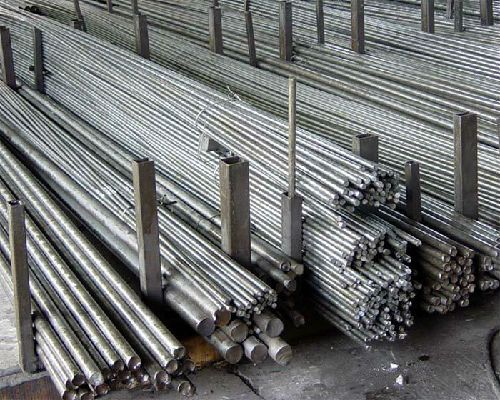
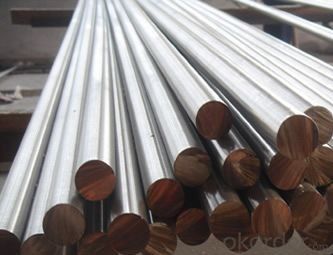
- Q: What are the different types of steel round bars used in the automotive chassis components?
- There are several different types of steel round bars used in automotive chassis components, including carbon steel, alloy steel, stainless steel, and tool steel. Each type of steel offers different properties and strengths, allowing for the production of reliable and durable chassis components.
- Q: How do steel round bars perform in outdoor or marine environments?
- Steel round bars generally perform well in outdoor or marine environments due to their inherent strength and corrosion resistance. The composition of steel, particularly stainless steel, enables it to withstand exposure to moisture, saltwater, and other harsh elements without significant degradation or rusting. This makes steel round bars a dependable choice for construction, infrastructure, and marine applications where durability and longevity are crucial.
- Q: What is the tolerance level for steel round bars?
- The tolerance level for steel round bars can vary depending on the specific industry standards and requirements, but commonly, it falls within a range of +/- a few millimeters or less.
- Q: How do you prevent rust on steel round bars?
- To prevent rust on steel round bars, you can apply a protective coating such as paint, oil, or a rust inhibitor. Regular cleaning and maintenance, including keeping the bars dry and free from moisture, can also help prevent rust formation.
- Q: What are the safety precautions when handling steel round bars?
- When handling steel round bars, it is important to follow certain safety precautions. These include wearing appropriate personal protective equipment such as safety gloves, goggles, and steel-toed boots to protect against potential injuries. Additionally, workers should be trained on the correct lifting techniques to avoid strains or back injuries. It is crucial to inspect the bars for any defects or damages before handling them, as flawed bars can pose safety risks. Proper storage and handling techniques should be followed to prevent accidents such as tripping or falling. Lastly, communication and coordination among workers are essential to ensure a safe working environment when handling steel round bars.
- Q: What are the advantages of using chromium-molybdenum alloy steel round bars?
- One of the main advantages of using chromium-molybdenum alloy steel round bars is their superior strength and durability. This type of alloy steel has excellent tensile strength and high resistance to wear and corrosion, making it ideal for various applications that require a strong and long-lasting material. Additionally, chromium-molybdenum alloy steel round bars offer good heat resistance, making them suitable for use in high-temperature environments. Overall, these bars provide a reliable and cost-effective solution for industries such as construction, automotive, and manufacturing.
- Q: What is the maximum temperature steel round bars can withstand?
- The maximum temperature that steel round bars can withstand varies depending on the specific grade of steel. However, in general, most steel round bars can withstand temperatures up to around 1000 to 1200 degrees Celsius (1832 to 2192 degrees Fahrenheit) without significant loss of structural integrity. It is important to note that prolonged exposure to high temperatures can lead to a reduction in the strength and hardness of the steel, as well as potential dimensional changes and distortion. Additionally, the specific properties and behavior of steel at high temperatures can also be influenced by factors such as alloy composition, heat treatment, and the presence of other elements or impurities. For applications requiring steel round bars to withstand extremely high temperatures beyond the typical range, specialized high-temperature steels, such as heat-resistant or creep-resistant alloys, may be used. These alloys are specifically designed to maintain their mechanical properties and structural integrity at elevated temperatures, often up to several thousand degrees Celsius.
- Q: Can steel round bars be used for making architectural or decorative elements?
- Yes, steel round bars can be used for making architectural or decorative elements. They are versatile and can be shaped, welded, and fabricated into various designs, giving them the potential to enhance the aesthetic appeal of architectural structures or serve as decorative elements.
- Q: Can steel round bars be used for making kitchen utensils?
- Kitchen utensils can indeed be made using steel round bars. Steel, being a robust and long-lasting material, is frequently employed in the manufacturing of kitchen utensils because of its ability to withstand corrosion, heat, and chemical harm. By effortlessly shaping and molding steel round bars, they can be transformed into a variety of utensils like spoons, forks, knives, and ladles. Moreover, steel utensils are non-reactive, ensuring that they do not release any harmful substances into food, thereby offering a safe option for cooking and food preparation.
- Q: Are more bars used in high-rise buildings?
- Look at the architectural design requirements and seismic grade, light steel reinforcement is mainly stirrups, columns, beams, shear walls generally use thread steel, plate bars and distribution bars are generally cold and twisted steel bars
Send your message to us
Cold Drawn Steel Round Bar with High Quality-75mm-100mm
- Loading Port:
- China Main Port
- Payment Terms:
- TT or LC
- Min Order Qty:
- 100 m.t
- Supply Capability:
- 10000 m.t/month
OKorder Service Pledge
OKorder Financial Service
Similar products
Hot products
Hot Searches
Related keywords
